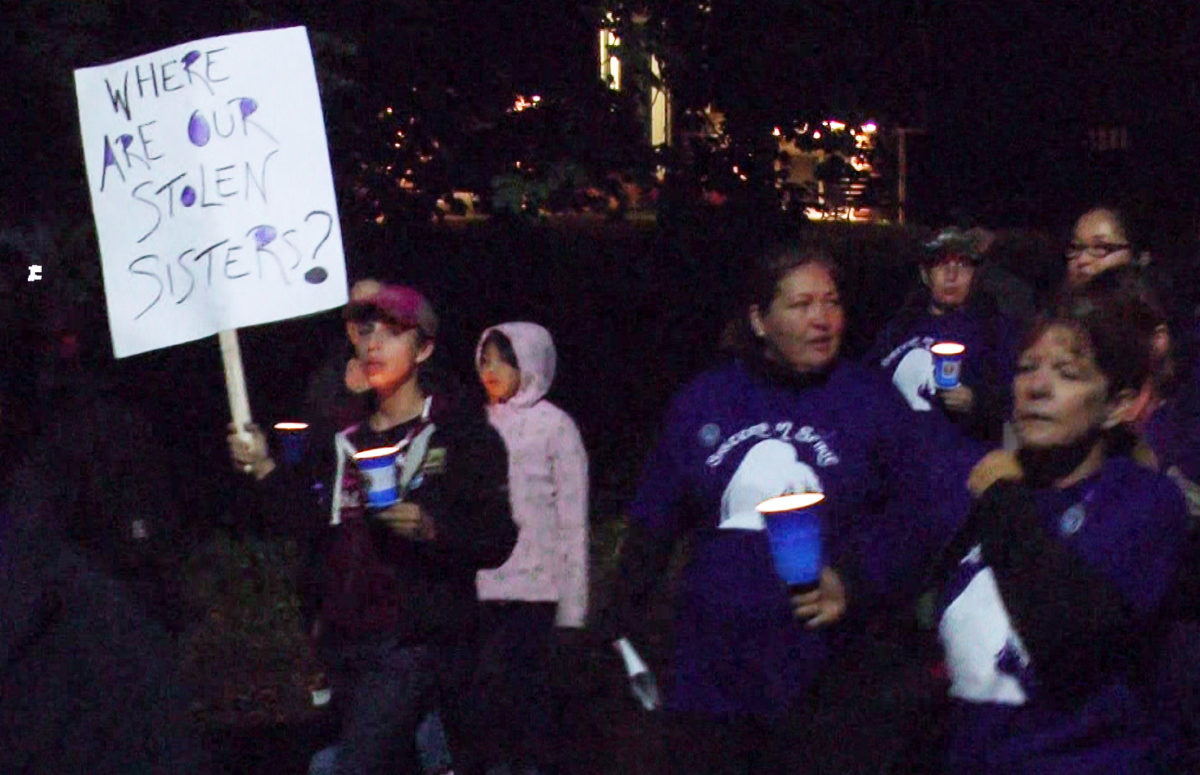Almost 1,200 missing and murdered aboriginal women were honoured with a march and vigil Saturday night that began at Chief Harold Sappier Memorial Elementary School in St. Mary’s First Nation.
Many among the crowd of roughly 100 voiced a desire to see Parliament Hill inquire into the high rate at which aboriginal women are being killed. It was one of hundreds of annual Sisters in Spirit vigils put on across the country since 2011, including in St. Mary’s and Tobique First Nation.
“I don’t know what the answer is. I do know we need more information. We need an inquiry,” said St. Mary’s Chief Candice Paul after the march from the elementary school on to the community and cultural centre.
Prime Minister Stephen Harper responded to ongoing calls for a public inquiry into the issue on Aug. 21, saying, “I think we should not view this as sociological phenomenon. We should view it as crime… It is crime, against innocent people, and it needs to be addressed as such.”
This May, the RCMP released its own inquiry that found 165 missing and 1,017 murdered aboriginal females between 1980 and 2012, 225 of which remained unsolved. Estimates of around 600 missing and murdered aboriginal women were touted at the St. Mary’s event.
New Brunswick RCMP did not provide an interview or statement before deadline.
Traditional music and drumming was played along the way to and at the St. Mary’s First Nation Community and Cultural Centre, where the sacred fire was also lit and a prayer said for women past, present and future by Tobique elder Ron Tremblay.
“I think the answers lay within our own communities,” he said. “It doesn’t lay with trusting in the government to solve this or trusting the police.”
The RCMP report concluded more effort needed to be spent to solve unresolved cases and increase public awareness. It also stated the new data should be used to focus prevention efforts like the Aboriginal Shield program, in place in Elsipogtog First Nation, which focuses on preventative measures for youth, and provides for police working with young offenders in collaboration with local leaders and practices.
Ashley Nash, a recently-graduated computer software developer in Fredericton, wasn’t aware of any police programs in place.
Nash joined the organizing committee for the vigil because while the issue is gaining attention, it isn’t treated as a priority by the government.
“I believe more service and programs and information need to be available,” she said.
Chief Paul and members of the Conservative federal government disagree with Harper’s view that this issue is not one worthy of sociological review.
“There’s a lot of contributing factors, but mostly from the residential schools,” Paul said.
“If you don’t learn how to be a parent, you can’t parent your children. There’s a lot of shame that they feel, these survivors. And it’s passed on generation to generation and we need to stand up and end this cycle of abuse.”
A July 8 draft report evaluating the Aboriginal Community Safety Development Contribution expressed many aboriginal communities desire to see the programs continue by addressing the root cause of violence in their communities.
The report found 16 per cent of female homicides between 1980 and 2012 were of aboriginal women, though the rate at which female homicides were solved was almost nine in 10, regardless of victim origin. Just over four per cent of Canadians identify as native.
“I don’t think it stems from native communities per se. I think because of the acts of the government and because of our poverty-stricken states that we’re in. I for one blame the government,” said Tremblay.
